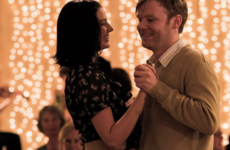IN 1956, THERE were no fewer than 56 separate cinemas across Dublin city and its surroundings. Practically every village and suburb had its own cinema. By 2005, there were only 12 cinemas left. Some of their buildings, which were often beautiful, still stand. Many have been demolished and replaced by modern office blocks and department stores. The now-lost cinemas are lovingly catalogued in Jim Keenan’s book Dublin Cinemas: A Pictorial Selection. Here are a few of them:
The Tivoli on Burgh Quay
The Tivoli Theatre showed films from 1901 to 1928. Its building on Burgh Quay was later occupied by the offices of the Irish Press, before being demolished and replaced by a modern office block.
The Forum, Glasthule
The Astoria Cinema opened in Glasthule in 1940. Renamed The Forum, it was home to the first automated projector in Ireland – a move which caused an industrial dispute with projectionists that saw the cinema’s owner occupy the projection box in a hunger strike. The Forum closed in 1999 and was demolished in 2002.
The Picturedrome, Harcourt Road
The Picturedrome was housed in a building called the Abercorn Hall, and showed movies from 1912 to 1922. People had to be careful not to knock the projector over when entering the hall. The buildings were demolished in the early 1980s and the Harcourt Centre office development now stands on the site.
The Ambassador Cinema, O’Connell Street
The Ambassador’s building dates from 1764, when it was the Round Room of the Rotunda. It was used occasionally as a cinema from about 1897, and became a full-time operation in the early 20th century. Despite several closures, it ran as a cinema until 1999. Seen here with hand-painted sign by Dublin signwriter Kevin Freeney. (Thanks to his son Paul Freeney, whose work you can see here.)
The Metropole Cinema, O’Connell Street
After the hotel on this site was destroyed in the Easter Rising, it was rebuilt as a luxurious entertainment complex including a restaurant, a grill room, a 1,000-seater cinema and a dancehall. The Metropole cinema opened in 1922 and once employed more than 200 people. After closing in 1972, the building was demolished and replaced by a department store. It is now a Penneys outlet.
The Capitol Theatre, Princes Street
Opened as the La Scala cinema in 1920, it had a 1,900-seater auditorium with two balconies and 32 private boxes. The venue was renamed The Capitol in 1927 and screened Ireland’s first ‘talkie’ – The Singing Fool – in 1929. It closed in 1972 along with The Metropole.
The Volta (later The Lyceum), Mary Street
The Volta was Dublin’s first full-time cinema, and the brainchild of James Joyce. It opened in 1909, was renamed The Lyceum shortly afterwards, and operated for almost four decades before closing in 1947. A Penneys now stands on the site.
Camden Cinema, Lower Camden Street
The Camden opened in 1912, and its 400 seats were heated by a solid-fuel stove at the back of the auditorium. It closed in 1948 and the site is now occupied by an office block housing the headquarters of Concern.
The Grand Central, O’Connell Street
The Grand Central opened its doors in 1921, with 800 seats and a balcony so steep it caused some customers to complain of vertigo. It was badly damaged in a bomb attack in 1923, and finally destroyed when a fire broke out in 1946. It is now a bank.
Tower Cinema, Monastery Road, Clondalkin
Opened in 1939, the Tower operated in a converted bus company headquarters until closing in 1977.
The Classic Cinema, Harold’s Cross
Opened in 1953 as the Kenilworth with a huge 1,115-seater auditorium, the cinema was subdivided into two screens in the 1970s and reopened as the Classic. In latter years it was best known for its late-night screening of the Rocky Horror Picture Show. The Classic closed in 2003.
Dorset Cinema, Granby Row
Opened in 1911 in a converted chapel, it became The Plaza around 1928 and later the Plaza Cinerama. After its closure in 1981, the building was used by the National Wax Museum until it too closed at that address in 2005. All the information in this article, and most of the photographs, are taken from Jim Keenan’s excellent book Dublin Cinemas: A Pictorial Selection. It has many more images and a complete catalogue of cinema locations in Dublin. The book is available to purchase here and in bookshops. Thanks to Jim Keenan and the National Library of Ireland for their assistance in compiling the images.






















COMMENTS (87)